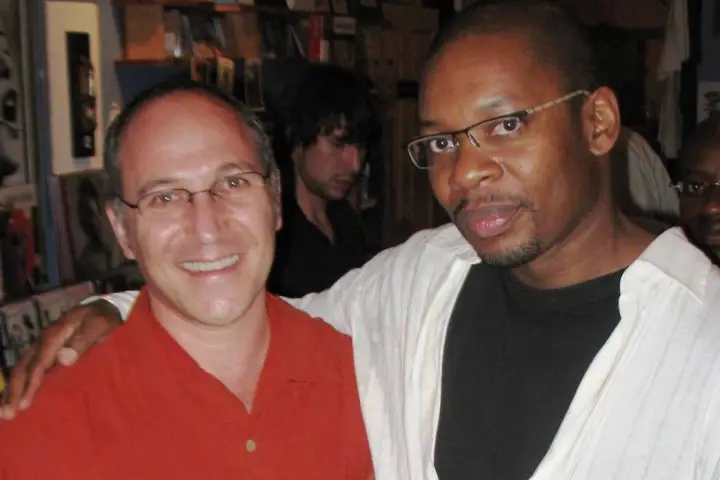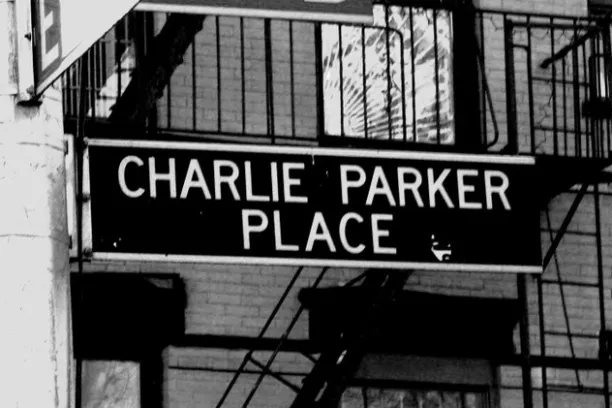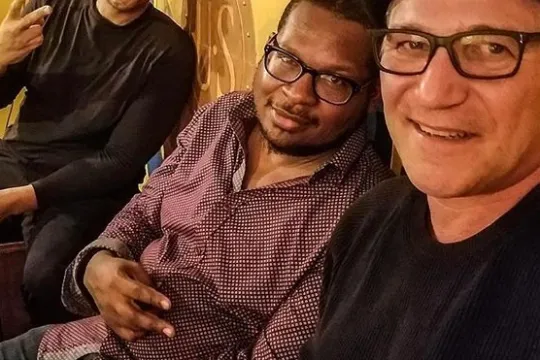New York City, NY
March 23, 2025
Exploring Famous Jazz Clubs in New York in the 1920s: Culture & Influence
Exploring Famous Jazz Clubs in New York in the 1920s: Culture & Influence

We invite you to join us on a journey back to the vibrant era of the 1920s in New York. During this time, jazz music grew into a powerful cultural movement that changed the face of music and nightlife with a rise in jazz clubs in NYC.
In this article, we explore the famous jazz clubs that shaped the city, the influential musicians who graced their stages, and the lasting impact of that dynamic era. Our guide will help you understand how these clubs became centers of culture and influence in New York City.
A Glimpse into the Roaring Twenties
The 1920s, known as the Roaring Twenties, were a time of great change and excitement. New York City was at the heart of this transformation.
During the Harlem Renaissance, jazz music emerged as a new sound that reflected the energy and spirit of the age. The famous jazz clubs in New York became gathering places for those who wanted to experience the latest in music and dance. They were hubs of creativity where musicians, artists, and socialites met to share ideas and celebrate life.
During this era, the club scene was alive with energy. The clubs were often hidden in the backstreets and basements of the city, offering an intimate setting that contrasted with the bustling streets above. They were known for their vibrant atmospheres, where the sounds of trumpets, saxophones, and pianos filled the air. This new musical style captured the imagination of many and spread far beyond New York City.
The Birth of Iconic Jazz Clubs
The emergence of famous jazz clubs in New York in the 1920s was a natural outcome of the city’s love for music.
These jazz clubs were not only places to listen to music; they were cultural institutions that defined an era. These venues played a major role in popularizing jazz and establishing it as a lasting art form.
Many clubs began as modest venues, but their influence grew as word spread about the incredible performances taking place inside. The clubs provided a space for experimentation and innovation, where musicians could push the boundaries of their art.
In these settings, the fusion of African-American musical traditions with European musical influences created a unique sound that captivated audiences.
Culture and Influence of Jazz Clubs
Jazz clubs in the 1920s were much more than entertainment venues. They were symbols of freedom, creativity, and social change. The clubs broke down many social barriers, welcoming people from different backgrounds to share in the joy of music.
These places quickly became spaces where ideas flowed freely, and the strict rules of the day were set aside in favor of artistic expression. In these clubs, patrons experienced a mix of music, dance, and conversation that made every night a celebration.
The lively atmosphere encouraged spontaneity, and the improvisational nature of jazz became a reflection of life itself. As musicians took to the stage, they expressed the emotions of the era—hope, struggle, joy, and resilience. The influence of these clubs can still be felt today in the way we enjoy live music and embrace cultural diversity.
Notable Jazz Clubs in New York in the 1920s
Over the years, several jazz clubs in NYC have become legendary. Their names are remembered not only for the music they hosted but also for the stories they created. We explore some of the most famous clubs that defined the 1920s.
The Cotton Club
One of the most well-known clubs of the era was The Cotton Club. Located in Harlem, The Cotton Club was a hotspot for both performers and patrons. It became famous for its glamorous setting and the high-caliber acts it attracted. Although it had strict entry rules and was known for its segregated audience, the club helped launch the careers of many great musicians. The Cotton Club remains a symbol of the complex cultural history of New York.
The Savoy Ballroom
Another iconic venue was the Savoy Ballroom. Though primarily known as a dance hall, the Savoy was an essential part of the jazz scene. It was a place where people came together to dance to the swinging rhythms of live jazz bands. The Savoy was open to all, and its inclusive environment made it a melting pot of diverse musical influences. The energy and excitement of the Savoy set the stage for future dance clubs and continues to be celebrated in music history.
Smaller Venues with Big Impact
Beyond the big names, many smaller clubs played a crucial role in nurturing talent. These intimate venues allowed musicians to experiment and refine their skills. They provided a space where new ideas could be tested and where the bonds between musicians and their audiences were formed.
Though these clubs may not have achieved the fame of The Cotton Club or the Savoy Ballroom, their influence is felt in every note of modern jazz.
Influential Jazz Musicians of the 1920s
No discussion about jazz clubs in the 1920s is complete without mentioning the musicians who brought these venues to life. The clubs served as a stage for many legendary artists whose talents left an indelible mark on music.
Duke Ellington
Duke Ellington stands out as one of the most influential jazz musicians of the era. His work at various clubs in New York helped to popularize a sophisticated style of jazz.
Ellington’s compositions and arrangements are celebrated for their complexity and emotional depth. His innovative approach changed the course of jazz music and influenced generations of musicians.
Louis Armstrong
Louis Armstrong is another name that resonates with the spirit of the 1920s. Known for his virtuosic trumpet playing and distinctive voice, Armstrong brought a joyful and dynamic energy to every performance.
His ability to improvise and create music on the spot captivated audiences and set new standards for jazz. Armstrong’s performances in New York clubs remain a benchmark for live jazz performance.
The Role of Other Musicians
Many other talented musicians played a part in this vibrant scene. The clubs were a breeding ground for creativity where artists came together to experiment and collaborate. These interactions led to the development of new styles and techniques that would shape the future of jazz. The legacy of these musicians is a testament to the creative spirit that defined the 1920s.
The Lasting Legacy of the 1920s Jazz Clubs
The influence of the 1920s jazz clubs in New York extends far beyond their time. These clubs helped to set the foundation for modern jazz and have left an enduring mark on the cultural landscape of the city. Today, many of the principles and practices developed during that era continue to influence musicians and club owners alike.
Impact on Modern Music
The improvisational style that emerged in the 1920s is still a key element of jazz today. Modern musicians look back to the clubs of the past for inspiration. The creative freedom and innovative spirit of those early days have become integral to the identity of jazz music. Many clubs around the world now pay tribute to the pioneers of the 1920s by hosting events that celebrate that rich heritage.
Cultural Preservation
There is a strong desire to preserve the history of many “jazz clubs near me” in New York City. Museums, documentaries, and books celebrate the stories of the clubs and the musicians who made them famous. This cultural preservation helps to keep the spirit of the 1920s alive for future generations. By learning about the past, we can better appreciate the present and inspire the future.
Modern Venues Inspired by the Past
Many modern jazz clubs draw inspiration from the famous venues of the 1920s. They strive to recreate the intimate, vibrant atmosphere that made the old clubs so special. These venues combine classic decor with modern technology to offer a unique experience. They honor the traditions of the past while embracing the innovations of the present.
The Influence of Jazz on Society
The cultural influence of jazz in the 1920s went far beyond music. Jazz clubs were centers of social change. They challenged old norms and brought people together from different walks of life. The music created a space where everyone could enjoy art and creativity regardless of their background.
Jazz helped to break down social barriers. In an era marked by strict racial divides and societal norms, the clubs offered a glimpse of a more open and inclusive world. They showed that art could bridge differences and bring people together in celebration of life. This social impact is one of the many reasons why the legacy of the 1920s jazz clubs continues to be celebrated today.
Preserving the Culture and History
Preserving the history of the jazz clubs is important. We believe that by understanding our past, we can better shape our future. The stories of the clubs and the musicians are a vital part of New York City’s cultural heritage. Efforts are underway to document and celebrate these stories so that they are not lost to time.
Many organizations and historians work to keep the memory of the 1920s alive. They collect photographs, record oral histories, and host events that pay tribute to the pioneers of jazz. This work helps to ensure that future generations will continue to learn from and be inspired by the rich legacy of that transformative era.
Looking Forward
The influence of the famous jazz clubs in New York in the 1920s continues to inspire us today. Their impact is seen in the music we hear, the clubs we visit, and the cultural values we hold dear. As we look to the future, we carry with us the lessons of the past—creativity, resilience, and the power of community.
We remain committed to celebrating the legacy of these iconic venues. By honoring the memory of the great musicians and clubs, we help to keep the spirit of jazz alive. The story of the 1920s is a reminder of how art can transform society and bring people together in meaningful ways.
Conclusion
In this exploration of famous jazz clubs in New York in the 1920s, we have traveled back in time to witness a pivotal moment in music history. The clubs were more than just places to hear music—they were cultural centers that shaped the way we experience art today. From legendary venues like The Cotton Club and the Savoy Ballroom to the influential musicians who graced their stages, the legacy of the 1920s lives on in every note of modern jazz.
We invite you to explore this rich history and celebrate the enduring influence of jazz. The culture and influence of these clubs remind us that music is a powerful force that unites people, sparks creativity, and drives social change. Let the spirit of the 1920s inspire you as you discover the timeless legacy of New York’s jazz clubs.
Big Apple Jazz Tours is the best tour operator in New York City, with over 25 years of experience with Greenwich Village and Harlem’s jazz scene. Here’s your answer to “jazz clubs near me” in New York City.
Book private jazz tours or the perfect group tours to get the best experiences that extend beyond jazz and create memories for a lifetime.
Related Blogs

Harlem Juke Joint Tour
Your Harlem jazz tour guide customizes the best itinerary for each given night, based on the most talented players in Harlem’s most exciting jazz clubs.
185 Reviews

Harlem Juke Joint Tour
Your Harlem jazz tour guide customizes the best itinerary for each given night, based on the most talented players in Harlem’s most exciting jazz clubs.
185 Reviews

Legends of Jazz Tour
This is our premium tour! It features jazz’s international superstars, and also rising stars who deserve wider recognition.
185 Reviews

Legends of Jazz Tour
This is our premium tour! It features jazz’s international superstars, and also rising stars who deserve wider recognition.
185 Reviews

Greenwich Village Jazz Crawl
Intimate Greenwich Village Jazz Tour to discover and explore two hidden jazz haunts and the sites where Billie Holiday, Charlie Parker, and Bob Dylan made history.
185 Reviews

Greenwich Village Jazz Crawl
Intimate Greenwich Village Jazz Tour to discover and explore two hidden jazz haunts and the sites where Billie Holiday, Charlie Parker, and Bob Dylan made history.
185 Reviews

Private Tour
We’ll design your private jazz tour based on your tastes and our extensive knowledge of musicians, clubs and speakeasies throughout the city. We know what is happening nightly on and off-the-beaten-path.
185 Reviews

Private Tour
We’ll design your private jazz tour based on your tastes and our extensive knowledge of musicians, clubs and speakeasies throughout the city. We know what is happening nightly on and off-the-beaten-path.
185 Reviews

Gordon Polatnick
Gordon is the founder of Big Apple Jazz Tours. What started as a personal challenge to discover and document all of New York’s hundreds of jazz joints and to establish Harlem’s first jazz day club, has now blossomed…
Gordan Patrick Full Bio

Amanda Humes
There’s no one in New York City like Amanda! Equal parts sass, smarts, and customer service – Amanda is the Harlem resident, Columbia University graduate, and…
Amanda Humes Full Bio
